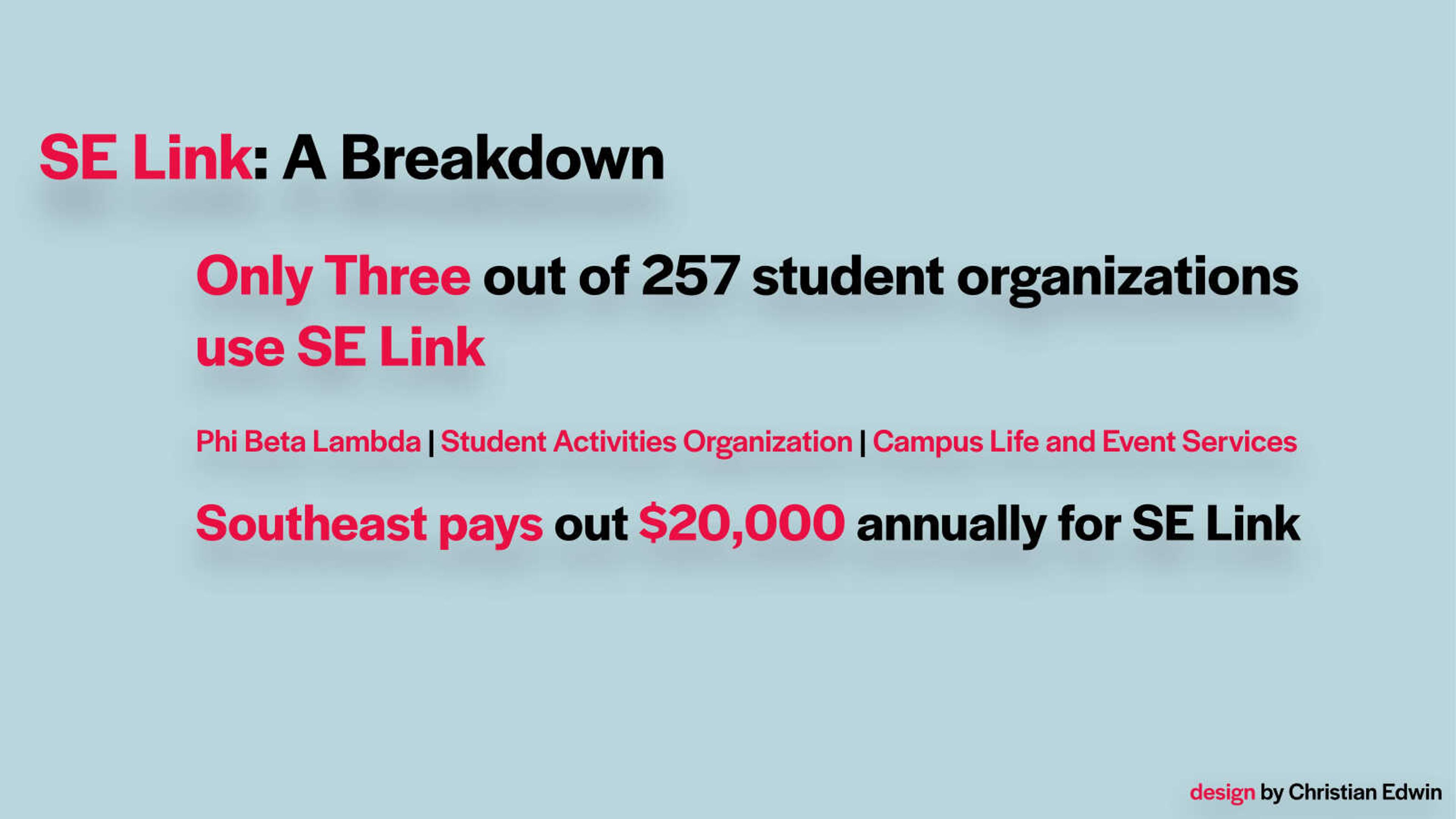__Editors note:__ The numbers represented in this story and graphic are based on the “event” portion of SELink
Student organizations are encouraged to post events they are hosting on the website selink.semo.edu, to inform students on different upcoming events; but the numbers show a majority of organizations are not utilizing the software.
Coordinator for Campus Programming Joanna Shaver said Southeast spends around $20,000 annually to keep this website running.
She said the site has been around for two years and they are trying to get more students to utilize it.
“This is a way for organizations to stay organized,” she said. “It helps us keep track of which organizations are registered.”
When logging onto the website, it shows three out of 257 campus organizations are actively using it: Phi Beta Lambda, Student Activities Council (SAC) and Campus Life and Events Services.
The site serves as a multipurpose website, mainly used to promote events. This allows students to connect with the organizations they are interested in. It can also be used to register to become an official organization.
Shaver said the website is not only for students to stay involved but also for student organizations to receive free promotion and attract more people to their events.
President of Student Activities Council Anthony Pulliam said he uses the software to post SAC’s upcoming events, he said the process the post is an extensive one.
Pulliam said it allows SAC to post its mission statement, goals, meetings, events and RSVP contact information; he said it just needs to be modified to be more user- friendly.
“You have to type in the information of the event, the venue, the amount of staff helping, upload a picture, and then it has to get approved by the advisor,” he said. “The main issue is that once it is done I have to log out and start all over again and do that for each event.”
He explained it can become a lengthy process when he has 15 events to post.
“If they could find a way to make it a little easier, it would be a great program,” he said.
Shaver said she wishes the website was used more often.
“The hard thing about technology is that there are new applications and ways for organizations to function, and before we got this website, groups were already figuring out what worked best for them,” she said. “We are trying to encourage the students and organizations to use it, but we also understand that when you have a system in place it is hard to change.”
She said if students were to use this to its full capability they could track their organizations membership, service hours, learning objectives, attendance at events, communicate with members, share events and more.
Shaver said there is a new feature for forms.
“If you are trying to run for student government you can apply through this website; we also have other verification forms available as well,” Shaver said.
Although it has different functions, participation is seen more on social-media platforms.
One popular alternative among students is a Living at Southeast page on Facebook, which has 5,495 followers.
“I don’t think using this program really increases participation,” Pulliam said. “Marketing through Facebook on Living at Southeast is what really gets the students to come out, if they are going to continue to pay for this program, I would suggest updating the system or make it easier to use.”
Some students know about SELink, but do not use it.
Senior Stephanie Hughes said she has heard of SELink but has never visited it.
“I’m sure it would serve a better purpose if more organizations used it and more students knew about it,” she said. “It could potentially be a good thing for this campus.”
Shaver said there is an application available for devices that is correlated with the site called, “Corq,” but it mosty shows what the events are and is not for creation of content.
“If it was available in an app, it might get more usage from our students,” she said.
Shaver said they have been trying to utilize SELink more by requiring students who want to be involved with organizations, such as student government, to use it, and Students Activities Council has been posting in an attempt to push the website and get SELink’s name out there.
“It is a free management system for your organization-- free publicity, what's the harm?” Shaver said.
Shaver offers 30- minute tutorial sessions to students to explain how to use the website to its full potential.
She said the university’s membership to the website will last another year, and if participation remains low, further options will be explored.




